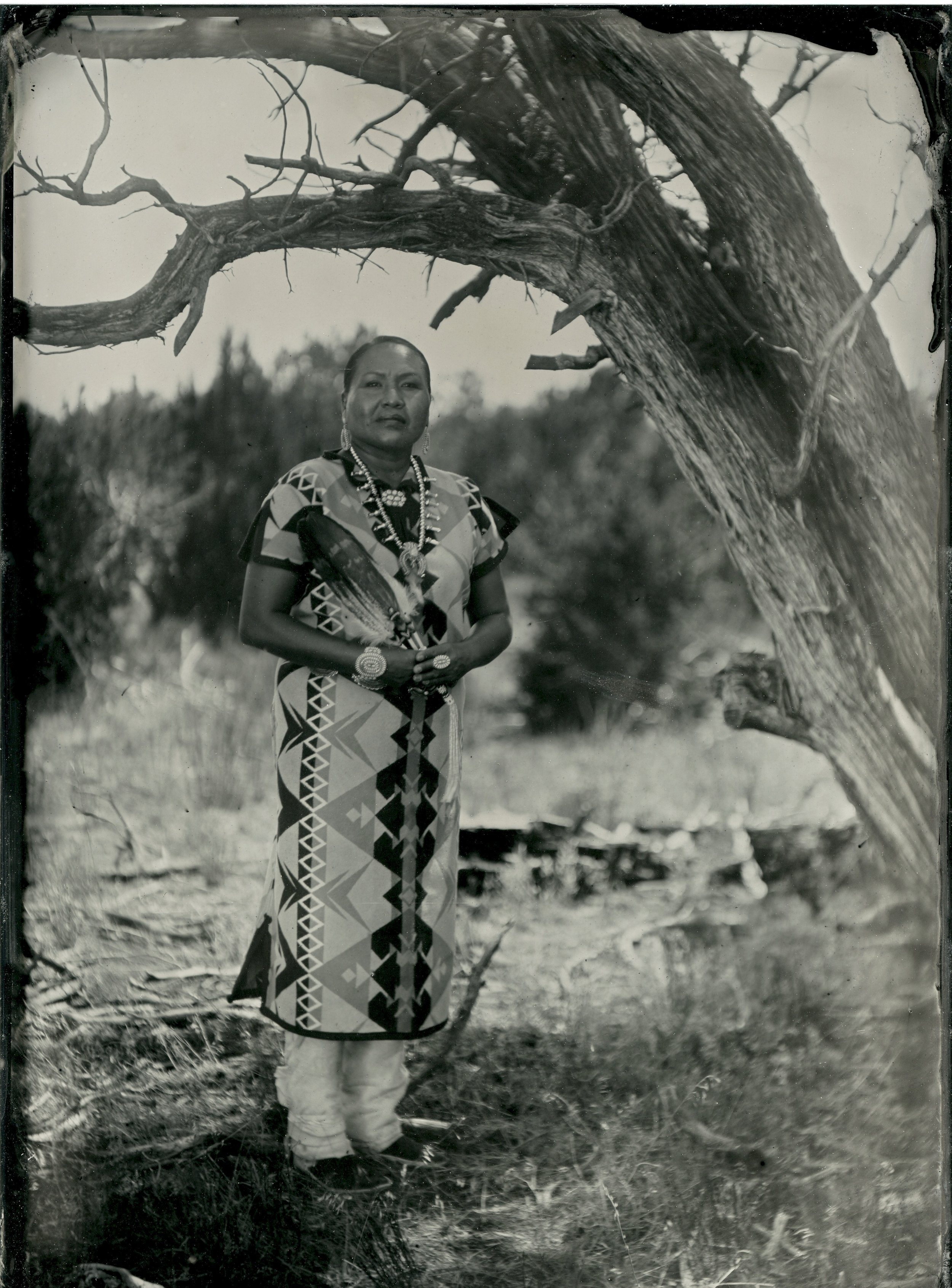Female Doctors of the Navajo Nation
A collaboration with writer Jade Begay and the Smithsonian Magazine. This series examined the polarity of modern and traditional medicine on the Navajo Nation during the summer 2020 at the height of the pandemic. Look for the full article in the March 2021 issue of Smithsonian.


Vanessa Jensen, M.D.
General surgeon, practicing 17 years
Fort Defiance, Arizona
Right, Jensen stands near San Francisco Peaks, a mountain range in north central Arizona sacred to the Diné people. For this portrait, she wears a black velveteen dress, turquoise jewelry borrowed from female family members and moccasins made by a cousin. "I dressed and prepared myself as if I were going to pray for healing and armored myself for this task with blessings," Jensen says. Her community ties, she says, build trust. "Patients know [my] family, they know my dad's side, they know my mom's side, they know my clan."


Jennifer Whitehair, M.D.
OB-GYN, 18 years
Tuba City Regional Health Care Corp., Arizona
Jennifer Whitehair wears a traditional Navajo rug dress and sash woven by her paternal aunt; another aunt gave her these slippers when she graduated from medical school in 2002. In her scrubs photo, Whitehair is wearing a face mask that represents the missing and murdered indigenous women’s movement; Whitehair hand-beaded the stethoscope herself. “The Navajo are resilient,” she says, “and their strength in times of turmoil will pull them closer together after this is all over.”


Sophina Calderon, M.D.
Deputy Chief of Staff, 9 years
Tuba City Regional Health Care Corp., Arizona
“I work in the same hospital that I was born in,” Calderon says, “with many colleagues who were my own doctors when I was a kid.” Her traditional outfit includes a squash blossom necklace and moccasins passed down from her grandmother. “Getting dressed is a huge chore, involving tightening the sash belt and tying the moccasins and tying my hair into a traditional bun.”


Michelle Tom, D.O., M.P.H.
Family medicine, 5 years
Winslow Indian Health Care Center, Winslow, Arizona
“In our Navajo belief system, it’s always about your community,” Tom says. “You’re only as strong as your family. You have this need to make a better place for our grandchildren. I always felt like it was my calling to be a healer.” A former basketball star at Arizona State University, she’s wearing a traditional Navajo rug dress as well as a squash blossom necklace made by her mother. The eagle feather, often wielded by traditional Diné medical practitioners, was a gift from her uncle.


LaWanda Jim, M.D.
Internal medicine, 12 years
Northern Navajo Medical Center, New Mexico
LaWanda Jim lives in Upper Fruitland, New Mexico, a farming community in Navajo Nation. Her ceremonial dress includes a silver concho belt, which her mother gave her when she graduated from high school, and turquoise bracelets, a gift from her father when she graduated from the University of New Mexico School of Medicine in 2008. Diné culture offers inspiration and solace, Jim says: “Our stories tell us of previous times when we dealt with monsters and how we survived and overcame them.”
All images are subject to copyright.
